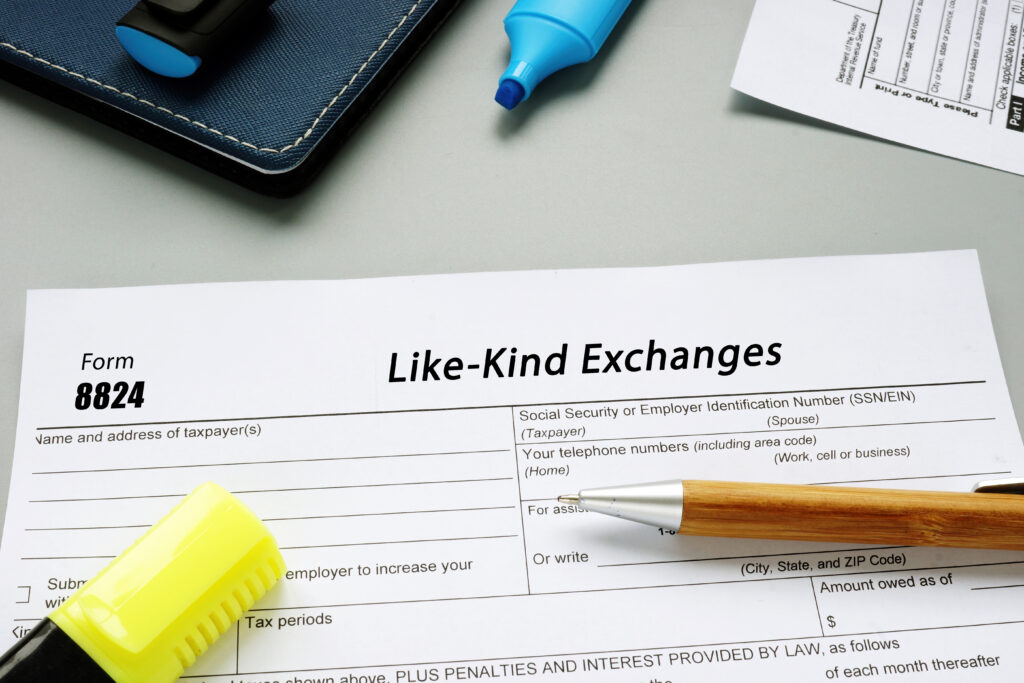Are you considering selling an investment property and, consequently, saving a large tax bill attached to it? You must have heard about the 1031 Exchange, and if you are worried about the ongoing debate on 1031 capping, don’t worry about this, as tax increases to one of our nation’s largest economic sectors. It is safe to say the 1031 Exchange is not going anywhere.
A 1031 exchange can be complicated, but it has some big tax advantages. Here’s everything you need to know about the 1031 Exchange:

What is 1031 Exchange?
1031 is named after section 1031 of the U.S. Revenue Code, used to postpone capital gains tax on the selling of an investment property by investing in a similar property. It is commonly called a “like-kind” exchange or Straker exchange. It is commonly used by investors who are looking to sell one property and reinvest the proceeds in other properties.
What Qualifies as Like-Kind Property in a 1031 Exchange?
As its name suggests, a replacement property is “like-kind” to a relinquished property if they are similar assets. However, like-kind properties need not be exactly the same. So how similar do two assets have to be if they are to be like-kind to each other? To fully grasp what qualifies as like-kind property under Section 1031 for a 1031 like-kind exchange, let’s break down the key points:
Nature of Property: Replacement property must be of the same kind as the property sold. Both properties must be held for business, productive use in a trade, or investment (26 U.S.C. § 1031(a)).
Similarity of Assets: Like-kind properties are not required to be exactly the same; they need to be similar assets. For example, a retail shopping center is like-kind to another retail shopping center, even if they differ in size, location, or specific tenants.
Real Estate Asset Eligibility: Generally, any real estate asset qualifies as “like-kind” to any other, given they are held for business, trade, or investment. A retail property can be like-kind to office buildings, warehouses, or even residential rental properties.
Location Flexibility: Replacement property does not have to be in the same state but must be within the United States. Property outside the United States may be exchanged for other property outside the U.S.
Asset Class Diversity: Replacement property does not have to be in the same class as relinquished property. Commercial, residential, undeveloped, and developed properties are all like-kind to each other.
Property Rights Variation: Properties do not have to be held with the same rights to be considered like-kind. Different types of property rights (permanent or temporary) can still qualify as like-kind.
Leasehold Considerations: Leasehold interests with more than 30 years left can be like-kind to fee-simple or leased fee interests. Shorter-term leasehold interests can qualify as like-kind to one another.
A 1031 exchange allows a property owner to offload an investment property and use the equity from that sale to purchase a new, similar property, deferring 100% of capital gains taxes in the process.
Rental Property Eligibility:
Generally, rental homes, condo buildings, and apartments are all like-kind and eligible for 1031 exchanges. Properties that are generating income through lease and rental agreements qualify as like-kind. Although personal residence portions are no longer applicable for 1031 exchanges, if you are considering it, consultation with a professional is advised.
Risks Associated with a 1031 Exchange:
Even with all the perks involved, if not invested wisely, there are risks associated with a 1031 Exchange, which are multi-faceted and include:
Finding Suitable Replacement Property: There is a risk of the investor not identifying or acquiring a suitable replacement property within the strict time frames stipulated by the IRS.
Capital Gains Tax Liability: If the replacement property is not identified or the exchange is not completed within the specified time, the investor may be liable to pay capital gains taxes on the deferred gain. This risk is particularly significant if the investment property has appreciated substantially in value.
Complexity of the Process: The 1031 Exchange process is intricate and necessitates compliance with IRS regulations. Investors typically require the assistance of a qualified intermediary to navigate the complexities, adding an additional layer of risk.
How Multi-family Properties Address 1031 Exchange Risks:
Investing in multi-family properties strategically addresses 1031 Exchange risks. With a diverse array of replacement options, these properties enhance the likelihood of finding a suitable investment within specified time frames. Known for stable appreciation, they offer a reliable buffer against significant capital gains tax liabilities. Additionally, the presence of professional management in multi-family properties ensures operational efficiency, facilitating a seamless 1031 Exchange process and alleviating the burden on investors. Investing in multi-family properties is a strategic move to mitigate 1031 Exchange risks:
Diverse Replacement Options: Multi-family properties offer a wide range of replacement options, increasing the chance of finding a suitable property within the specified timeframe.
Stable Appreciation: Known for stable and consistent appreciation, multi-family properties provide a reliable shield against significant capital gains tax liabilities.
Professional Management: With professional management in place, multi-family properties streamline operations, ensuring a smoother 1031 Exchange process and reducing the burden on investors.
Options for Exchanging Multi-family Owned Property Under 1031:
Several options are available for exchanging multi-family-owned property under the 1031 rule:
Same-for-Same Exchange: Exchange one multi-family property for another, maintaining a similar investment structure.
Diversification: Exchange into a diversified portfolio, spreading the investment across multiple multi-family properties to reduce risk.
Upgrade or Downsize: Upgrade to a larger multi-family property for increased potential returns or downsize for reduced management responsibilities.
Consider scaling your portfolio by acquiring additional properties through further 1031 exchanges. This strategy can help diversify your holdings, reduce risk, and increase your overall return on investment.
Talk to our experts and learn more about how to leverage 1031 exchange for multifamily investing. Let’s connect!!








